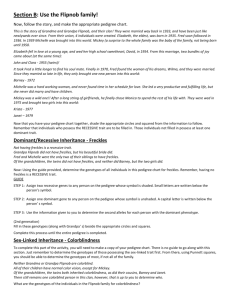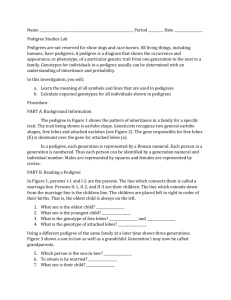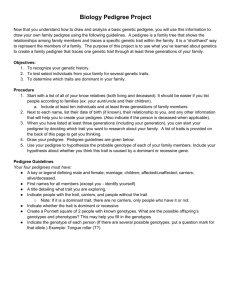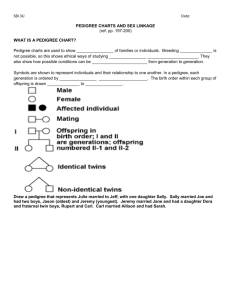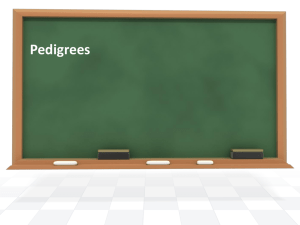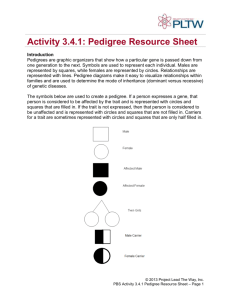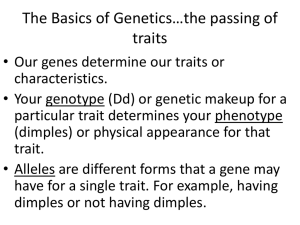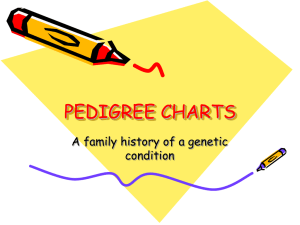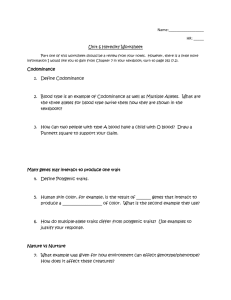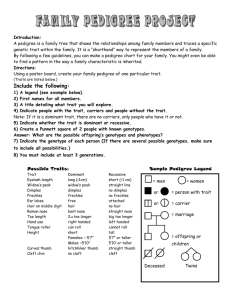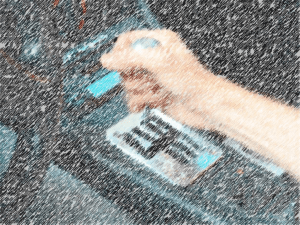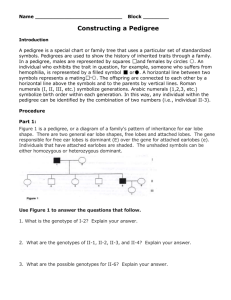Ch14 Family Pedigree Project (Required)
advertisement
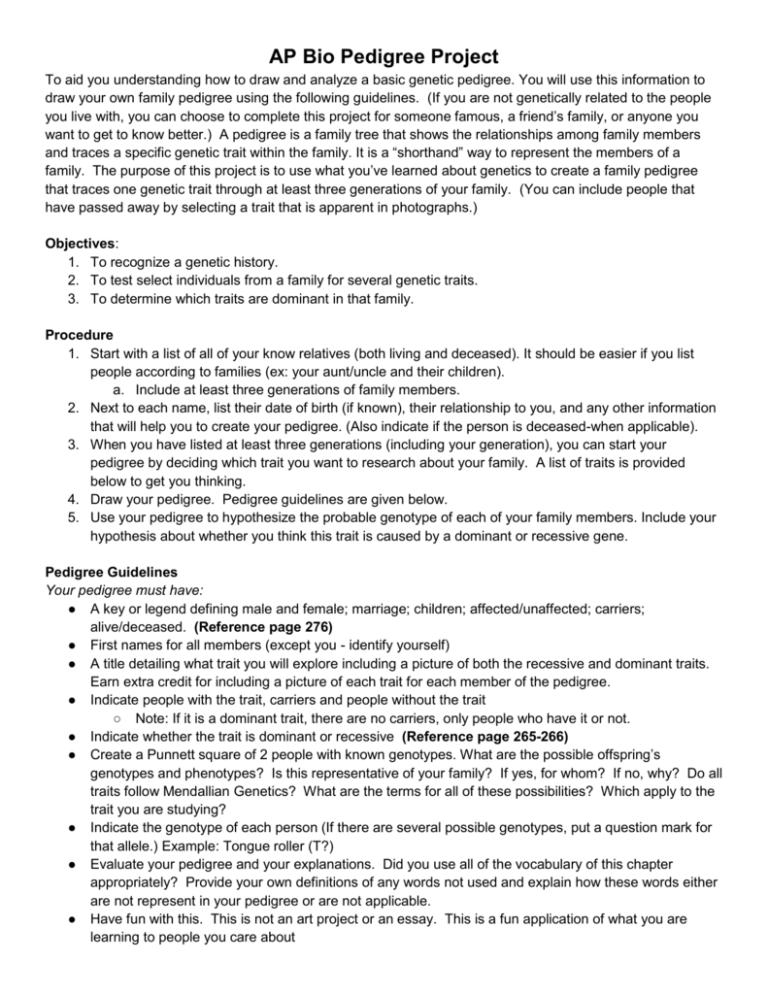
AP Bio Pedigree Project To aid you understanding how to draw and analyze a basic genetic pedigree. You will use this information to draw your own family pedigree using the following guidelines. (If you are not genetically related to the people you live with, you can choose to complete this project for someone famous, a friend’s family, or anyone you want to get to know better.) A pedigree is a family tree that shows the relationships among family members and traces a specific genetic trait within the family. It is a “shorthand” way to represent the members of a family. The purpose of this project is to use what you’ve learned about genetics to create a family pedigree that traces one genetic trait through at least three generations of your family. (You can include people that have passed away by selecting a trait that is apparent in photographs.) Objectives: 1. To recognize a genetic history. 2. To test select individuals from a family for several genetic traits. 3. To determine which traits are dominant in that family. Procedure 1. Start with a list of all of your know relatives (both living and deceased). It should be easier if you list people according to families (ex: your aunt/uncle and their children). a. Include at least three generations of family members. 2. Next to each name, list their date of birth (if known), their relationship to you, and any other information that will help you to create your pedigree. (Also indicate if the person is deceased-when applicable). 3. When you have listed at least three generations (including your generation), you can start your pedigree by deciding which trait you want to research about your family. A list of traits is provided below to get you thinking. 4. Draw your pedigree. Pedigree guidelines are given below. 5. Use your pedigree to hypothesize the probable genotype of each of your family members. Include your hypothesis about whether you think this trait is caused by a dominant or recessive gene. Pedigree Guidelines Your pedigree must have: ● A key or legend defining male and female; marriage; children; affected/unaffected; carriers; alive/deceased. (Reference page 276) ● First names for all members (except you - identify yourself) ● A title detailing what trait you will explore including a picture of both the recessive and dominant traits. Earn extra credit for including a picture of each trait for each member of the pedigree. ● Indicate people with the trait, carriers and people without the trait ○ Note: If it is a dominant trait, there are no carriers, only people who have it or not. ● Indicate whether the trait is dominant or recessive (Reference page 265-266) ● Create a Punnett square of 2 people with known genotypes. What are the possible offspring’s genotypes and phenotypes? Is this representative of your family? If yes, for whom? If no, why? Do all traits follow Mendallian Genetics? What are the terms for all of these possibilities? Which apply to the trait you are studying? ● Indicate the genotype of each person (If there are several possible genotypes, put a question mark for that allele.) Example: Tongue roller (T?) ● Evaluate your pedigree and your explanations. Did you use all of the vocabulary of this chapter appropriately? Provide your own definitions of any words not used and explain how these words either are not represent in your pedigree or are not applicable. ● Have fun with this. This is not an art project or an essay. This is a fun application of what you are learning to people you care about Suggested Traits Trait Dominant Recessive Eyelash length Long (1cm or more) Short (less than 1 cm) Widow’s peak Widow’s peak Straight hairline Dimples Dimples No dimples Freckles Freckles No freckles Ear lobes Free ear lobes Attached ear lobes Mid-digital hair Hair on middle digit No hair on middle digit Toe length 2nd toe longer Big toe longer Hand use Right-handed Left-handed Tongue rolling Tongue roller Non-tongue roller Cleft chin No cleft Cleft chin Curved thumb Hitchhiker’s thumb Straight thumb


